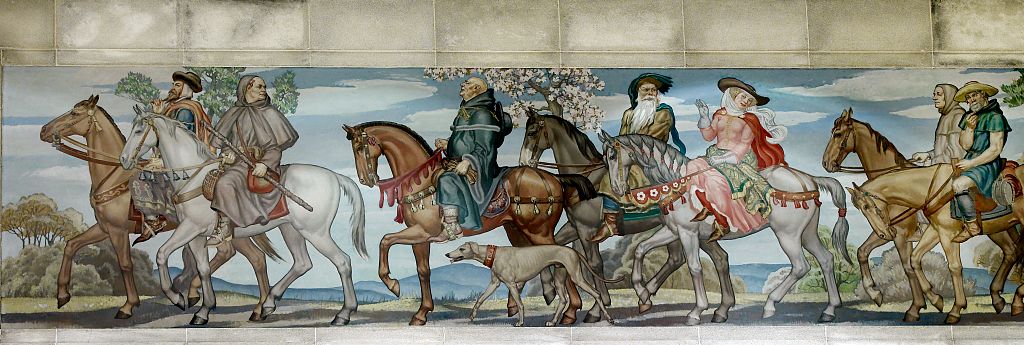Ever thought about what a medieval road trip with a motley crew of storytellers would be like?
Geoffrey Chaucer’s The Canterbury Tales is your golden ticket to 14th-century England. If you’re interested in tall tales and strong ale, that is. Picture a detective assembling a lineup of suspects, each with their own story—only this time, it’s not actually “The Usual Suspects”. They’re pilgrims heading to Canterbury, and the only mystery is who can spin the best yarn. Let’s slip into our trench coats and take a stroll through this literary classic.
The premise is straightforward: a group of 29 pilgrims gathers at the Tabard Inn in Southwark, ready to embark on a journey to the shrine of Saint Thomas Becket in Canterbury. To make the trip less dull than a stakeout in the rain, they decide to hold a storytelling contest. Each pilgrim tells tales that range from chivalrous knights and cunning foxes to scandalous affairs that would make any gumshoe raise an eyebrow. But don’t worry—I won’t spoil the endings or reveal any plot twists worthy of a noir thriller.
Chaucer looks beyond the surface; he digs deeper than a detective searching for clues. The tales explore themes like social satire, love, greed, and morality. The old bastard shines a light on the quirks and flaws of each social class, much like an investigator squirming through the underbelly of a city. The tension between appearance and reality is a recurring motif, a concept analyzed in Jill Mann’s research on Chaucer’s irony (Chaucer and Medieval Estates Satire, 1973). The work also reflects the changing tides of medieval society, such as the decline of feudalism and the rise of the middle class.
Chaucer’s writing is as rich and varied as the cast of characters in a classic whodunit. Written in Middle English, the original text might seem as cryptic as a coded message in a noir film. But fear not—modern translations decode his wit and wordplay, making it accessible to today’s readers. He employs satire, irony, and vivid imagery, crafting tales that are as engaging as a high-stakes interrogation. The interplay between the pilgrims adds layers to the narrative, much like the overlapping alibis in a complex case.
The Canterbury Tales is a collection of stories but, at the same time, it’s a snapshot of medieval life, capturing the essence of an era rife with change. This is the aftermath of the Black Death and the Peasants’ Revolt of 1381. It’s a cornerstone of English literature, influencing countless works and studies, including those on narrative structure and social commentary.
For young, curious minds looking to broaden their horizons, Chaucer offers a journey that’s as enlightening as it is entertaining. So, if you’re ready to delve into tales that combine the intrigue of a noir mystery with the vibrancy of medieval England, The Canterbury Tales is the case file you didn’t know you needed.


